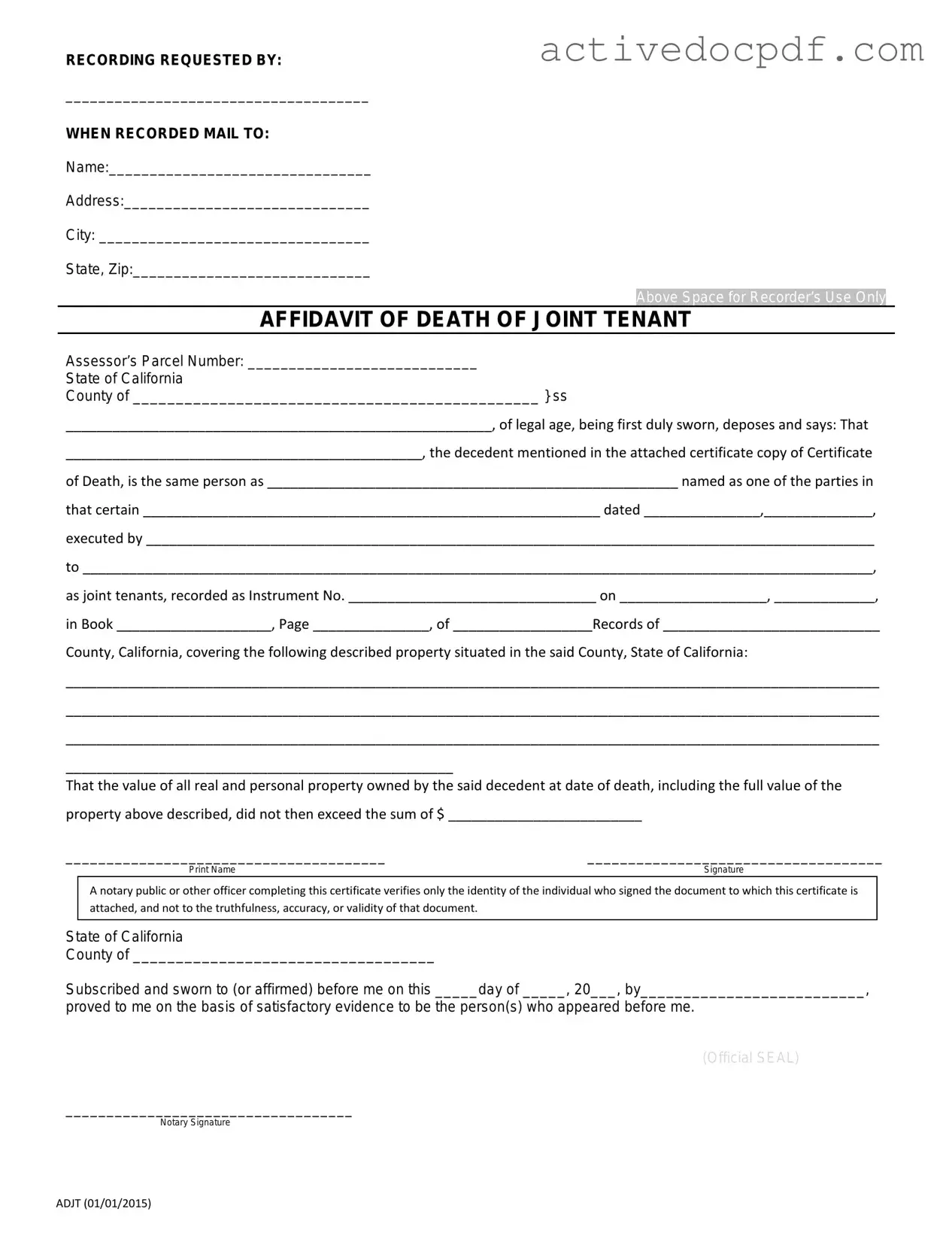What is the California Death of a Joint Tenant Affidavit?
The California Death of a Joint Tenant Affidavit is a legal document used to transfer the interest of a deceased joint tenant to the surviving joint tenant(s). This affidavit simplifies the process of transferring property ownership without the need for probate, provided that the property was held in joint tenancy.
Who can file the affidavit?
The affidavit can be filed by the surviving joint tenant(s) of the deceased. It is essential that the surviving tenant(s) have the necessary documentation, such as the death certificate of the deceased joint tenant, to support the claim.
To complete the affidavit, the following information is typically required:
-
Name and address of the deceased joint tenant
-
Name and address of the surviving joint tenant(s)
-
Date of death of the deceased joint tenant
-
Legal description of the property
-
Statement confirming the joint tenancy status
Is a death certificate necessary?
Yes, a certified copy of the death certificate is required to complete the affidavit. This document serves as proof of the joint tenant's death and is crucial for the transfer of property ownership.
Where should the affidavit be filed?
The completed affidavit must be filed with the county recorder's office in the county where the property is located. This filing officially updates the property records to reflect the change in ownership.
Are there any fees associated with filing the affidavit?
Yes, there are typically filing fees associated with submitting the affidavit to the county recorder's office. Fees may vary by county, so it is advisable to check with the local office for specific amounts.
What happens if there are multiple surviving joint tenants?
If there are multiple surviving joint tenants, each of them can sign the affidavit. The property will be transferred to all surviving joint tenants equally, unless otherwise specified in the joint tenancy agreement.
Can the affidavit be challenged?
Yes, the affidavit can be challenged by interested parties, such as heirs or creditors of the deceased. If a challenge arises, it may lead to legal disputes regarding the property ownership and could require court intervention.
How long does the process take?
The process of filing the affidavit is generally straightforward and can be completed relatively quickly, often within a few weeks. However, the time frame may vary based on the county's processing times and any potential challenges that may arise.
